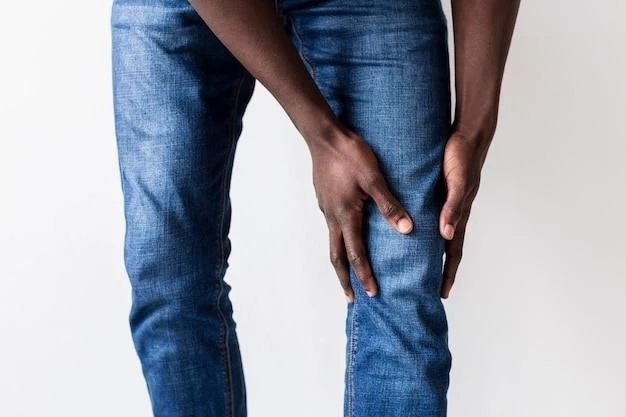Overview of Split Hand Urinary Anomalies Spina Bifida
Split Hand Urinary Anomalies Spina Bifida is a rare congenital genetic malformation disorder characterized by split hand/split foot‚ hydronephrosis‚ and spina bifida․ Learn more about its clinical manifestations and impact on kidneys․
Czeizel-Losonci Syndrome‚ also known as Split Hand Urinary Anomalies Spina Bifida‚ is an exceedingly rare congenital genetic malformation disorder characterized by split hand/split foot‚ hydronephrosis‚ and spina bifida․ It presents with thoracolumbar scoliosis‚ various spinal defects‚ and additional malformations like diaphragmatic hernia and radial anomalies․ The syndrome exhibits an autosomal dominant inheritance pattern‚ impacting multiple organ systems and requiring specialized management․
Definition and Characteristics
Czeizel-Losonci Syndrome (CLS)‚ also known as Split Hand Urinary Anomalies Spina Bifida‚ is a rare congenital genetic malformation disorder․ It presents with split hand/split foot‚ and additional anomalies like hydronephrosis and spina bifida‚ impacting multiple organ systems․ Seek specialized management for this complex condition․
Autosomal Dominant Inheritance
In the context of Split Hand Urinary Anomalies Spina Bifida‚ understanding the autosomal dominant inheritance is crucial․ This rare congenital genetic malformation disorder is inherited in a pattern that impacts multiple generations․ Seek genetic counseling for insights into inheritance risks and family planning․
Patients with Split Hand Urinary Anomalies Spina Bifida may exhibit skeletal anomalies like split hand/split foot‚ thoracolumbar scoliosis‚ spina bifida‚ and radial defects․ Neural defects can also be present‚ requiring comprehensive evaluation and management․
Skeletal and Neural Defects
Individuals with Split Hand Urinary Anomalies Spina Bifida may present with skeletal abnormalities like split hand/split foot‚ thoracolumbar scoliosis‚ and radial defects․ There can also be neural defects that require specialized evaluation and care․ Seek comprehensive assessment and management for these complex issues․

Disease Description⁚ Czeizel-Losonci Syndrome (CLS)
Czeizel-Losonci Syndrome (CLS) is an exceedingly rare congenital genetic malformation disorder characterized by split hand/split foot‚ hydronephrosis‚ and spina bifida․ Seek specialized care for this complex condition․
Rare Congenital Malformation Disorder
Czeizel-Losonci Syndrome (CLS) is an exceedingly rare congenital genetic malformation disorder‚ characterized by split hand/split foot‚ hydronephrosis‚ and spina bifida․ Seek specialized care for this complex condition that impacts multiple organ systems․
Impact of Spina Bifida on the Kidneys
Spina Bifida can lead to kidney damage‚ affecting about 26 out of 1‚500 infants born with the condition annually․ Early diagnosis and management are crucial to prevent kidney problems․
Development of Kidney Damage
Spina Bifida can lead to kidney damage‚ affecting about 26 out of 1‚500 infants born with the condition annually․ Early diagnosis and management are crucial to prevent kidney problems․ Seek specialized care to address kidney issues associated with Spina Bifida․
Diagnostic procedures‚ including blood tests during pregnancy‚ ultrasounds‚ and maternal serum alpha-fetoprotein tests‚ can help in identifying Spina Bifida early․ Seek medical evaluation promptly․
Diagnostic Procedures for Spina Bifida
Diagnostic procedures for Spina Bifida may include blood tests during pregnancy‚ ultrasounds‚ and maternal serum alpha-fetoprotein tests․ Seek timely medical evaluation to detect and manage Spina Bifida․
Treatment Options and Management
Individuals with Split Hand Urinary Anomalies Spina Bifida may require a multidisciplinary approach involving surgical interventions and specialized care․ It is essential to seek expert management for this complex condition․
Surgical Interventions
Surgical interventions may be necessary for individuals with Split Hand Urinary Anomalies Spina Bifida‚ involving specialized procedures to address complications such as split hand/split foot‚ spina bifida‚ or obstructive urinary anomalies․ Consult with a healthcare provider to discuss appropriate surgical options for management․
Prognosis and Long-Term Outlook
The prognosis for individuals with Split Hand Urinary Anomalies Spina Bifida varies based on the severity of spinal and skeletal manifestations․ Seek specialized care for long-term management․
Complications and Disability Considerations
Complications associated with Split Hand Urinary Anomalies Spina Bifida may lead to varying degrees of disability․ Proactive monitoring and intervention are essential to address potential challenges and optimize long-term outcomes․ Seek specialized care for comprehensive management․
Research and Clinical Trials
Explore ongoing research and clinical trials for Split Hand Urinary Anomalies Spina Bifida to access innovative treatment modalities and advancements in care․ Stay informed and consider participating in relevant studies for improved outcomes․
Advancements in Treatment Modalities
Stay informed about the latest advancements in treating Split Hand Urinary Anomalies Spina Bifida through ongoing research and clinical trials․ Consider discussing these innovative treatment options with healthcare providers for optimal care․
Prevention Strategies for Spina Bifida
Take preventive measures through folic acid supplementation to minimize the risk of developmental issues like Spina Bifida during pregnancy․ Consult healthcare providers for guidance on folic acid intake․
Role of Folic Acid Supplementation
Folic acid supplementation is crucial in preventing developmental issues like Spina Bifida during pregnancy․ Consult healthcare providers for guidance on the appropriate intake of folic acid to reduce the risk of congenital malformations․
Association with Other Syndromes
Understand the relationship between Split Hand Urinary Anomalies Spina Bifida and syndromes like EEC syndromes and Limb-Mammary Syndrome to enhance diagnostic considerations․ Seek expert evaluation for comprehensive care․
Relationship to EEC Syndromes and Limb-Mammary Syndrome
Understand the association between Split Hand Urinary Anomalies Spina Bifida and conditions like EEC syndromes and Limb-Mammary Syndrome․ These relationships can aid in diagnosis and treatment decisions․ Seeking specialized care is essential for accurate management․

Addressing Congenital Closed Spinal Anomalies
Addressing congenital closed spinal anomalies‚ such as Split Hand Urinary Anomalies Spina Bifida‚ requires a neurologically-focused management approach․ Seek expert guidance to manage potential implications effectively․
Neurological Implications and Management Approaches
Effective management of Split Hand Urinary Anomalies Spina Bifida requires a neurologically-focused approach to address potential implications such as spinal and skeletal manifestations․ Consult with specialists for personalized care and interventions․
Access community assistance and rare disease networks for invaluable support and resources related to Split Hand Urinary Anomalies Spina Bifida․ Seek guidance from these groups for enhanced care․
Support Groups and Resources
Access support groups and rare disease networks to navigate challenges related to Split Hand Urinary Anomalies Spina Bifida․ Connect with these resources for assistance and insights on managing the condition․
Case Studies and Clinical Reports
Gain insights from genetic counseling and prenatal examinations related to Split Hand Urinary Anomalies Spina Bifida․ Understand complexities through case studies․ Consult with specialists for personalized care․
Insights from Genetic Counseling and Prenatal Examinations
Genetic counseling and prenatal examinations can provide valuable insights into the diagnosis and management of Split Hand Urinary Anomalies Spina Bifida․ Utilize these resources for personalized care and informed decisions․
The rising cases of Spina Bifida in different regions emphasize the importance of early diagnosis through blood tests and ultrasounds․ Stay vigilant about neural tube defects during pregnancy․
Current Trends in Incidence and Diagnosis
The rising cases of Spina Bifida in various regions indicate the importance of increased awareness and timely diagnosis through blood tests and ultrasounds for better management․ Stay informed about the prevalence to ensure early intervention․
Future Directions in Treatment and Research
Explore promising areas of study and collaborative efforts in the treatment and research of Split Hand Urinary Anomalies Spina Bifida․ Stay informed about advancements for enhanced care․
Promising Areas of Study and Collaborative Efforts
Stay updated on research advancements and collaborative initiatives for treating Split Hand Urinary Anomalies Spina Bifida․ Engage in promising studies for enhanced care and future treatment options․
